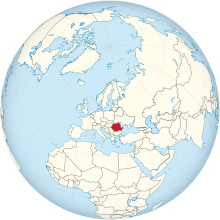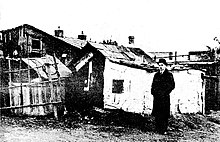Squatting in Romania
Appearance



Squatting in Romania began in the capital
Romanian Revolution in 1989, laws were abolished and the state had no land management policy. Problems with the state provision of housing have pushed people into squatting in areas such as Ferentari
. The first public squat in Romania was Carol 53, occupied in 2012.
History
The English term "
state communism, land was nationalised in 1948 and dwellings two years later.[2]
Recent
After the
Romanian Revolution in 1989, laws were abolished and the state had no land management policy. People occupied buildings and in some cases have remained in them, especially in cases of buildings scheduled to be demolished and then never destroyed.[3] In Bucharest however, Mayor Adriean Videanu evicted between 2,000 and 3,000 people in a process of cleaning up the city centre for business and tourism.[2]
Problems with the state provision of housing have pushed people into squatting in areas such as Ferentari.[4] As of 2015, there were over a thousand informal settlements across the country.[5] The first public squat in Romania was Carol 53 in Bucharest, occupied in 2012 by artists. This was a controversial project because in running the project the artists evicted a Roma family which was already silently squatting there.[2]
See also
References
- ^ "Casa Pompiliu Eliade". Bucureșteanul (in Romanian). 11 February 2020. Retrieved 2 April 2023.
- ^ ISBN 9781315652504.
- .
- S2CID 159419080.
- ^ Vâlceanuoth, Daniel-Gabriel; Suditu, Bogdan; Toth, Georgiana; Ivana, Cristina (2015). "Housing Inequalities Regarding the Informal Settlements in Romania". Romanian Review of Regional Studies. 11: 89–100.
